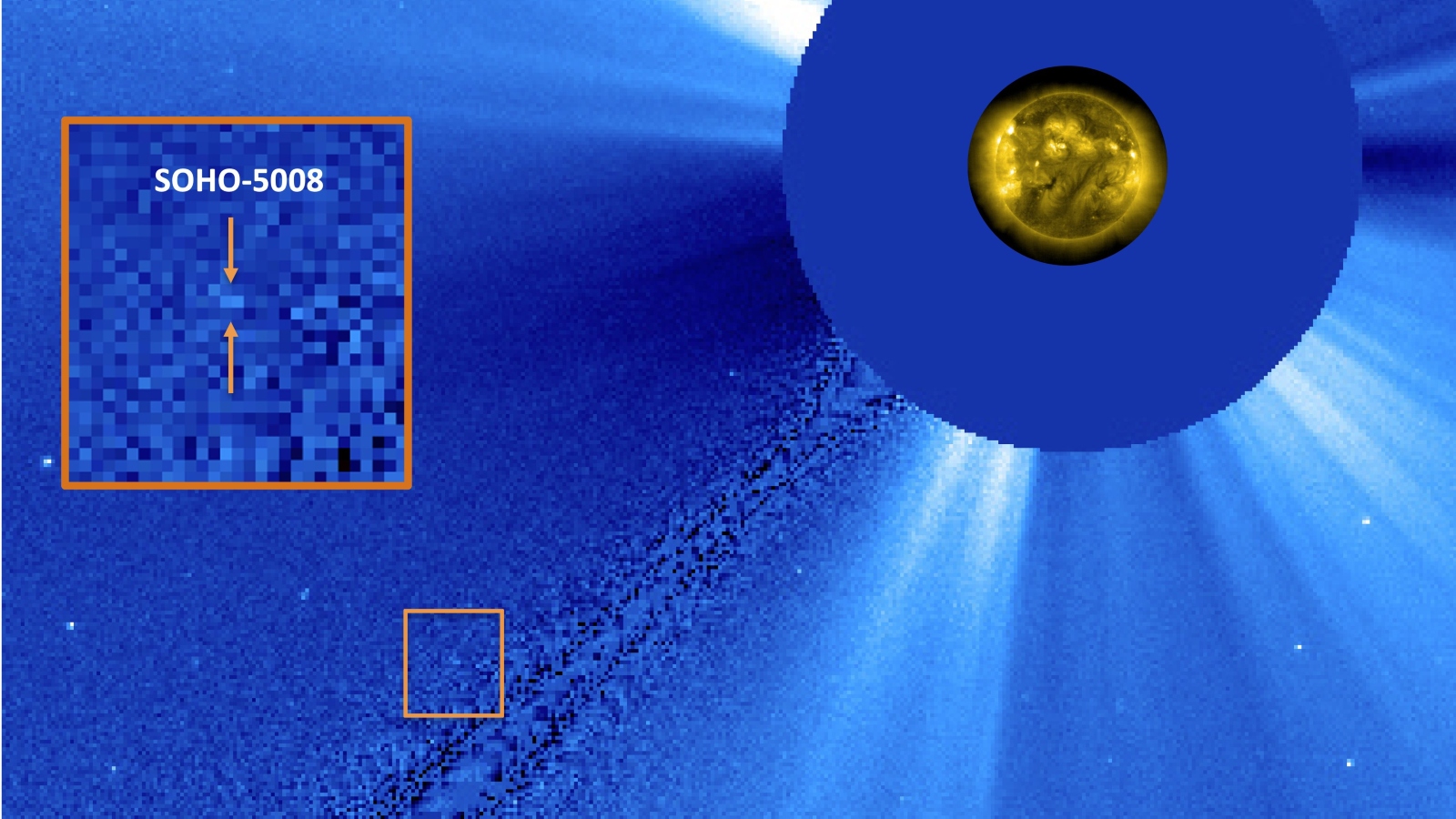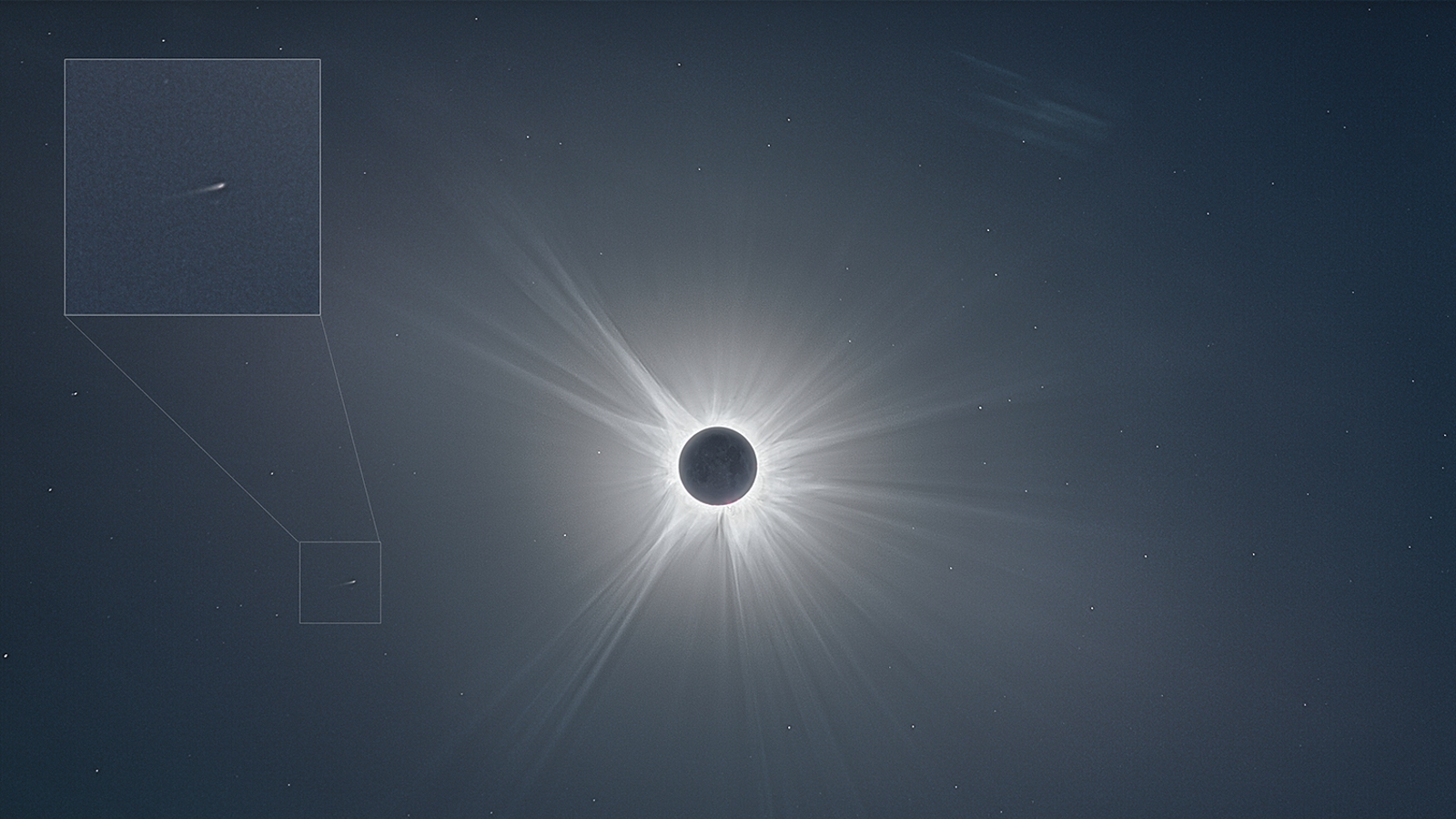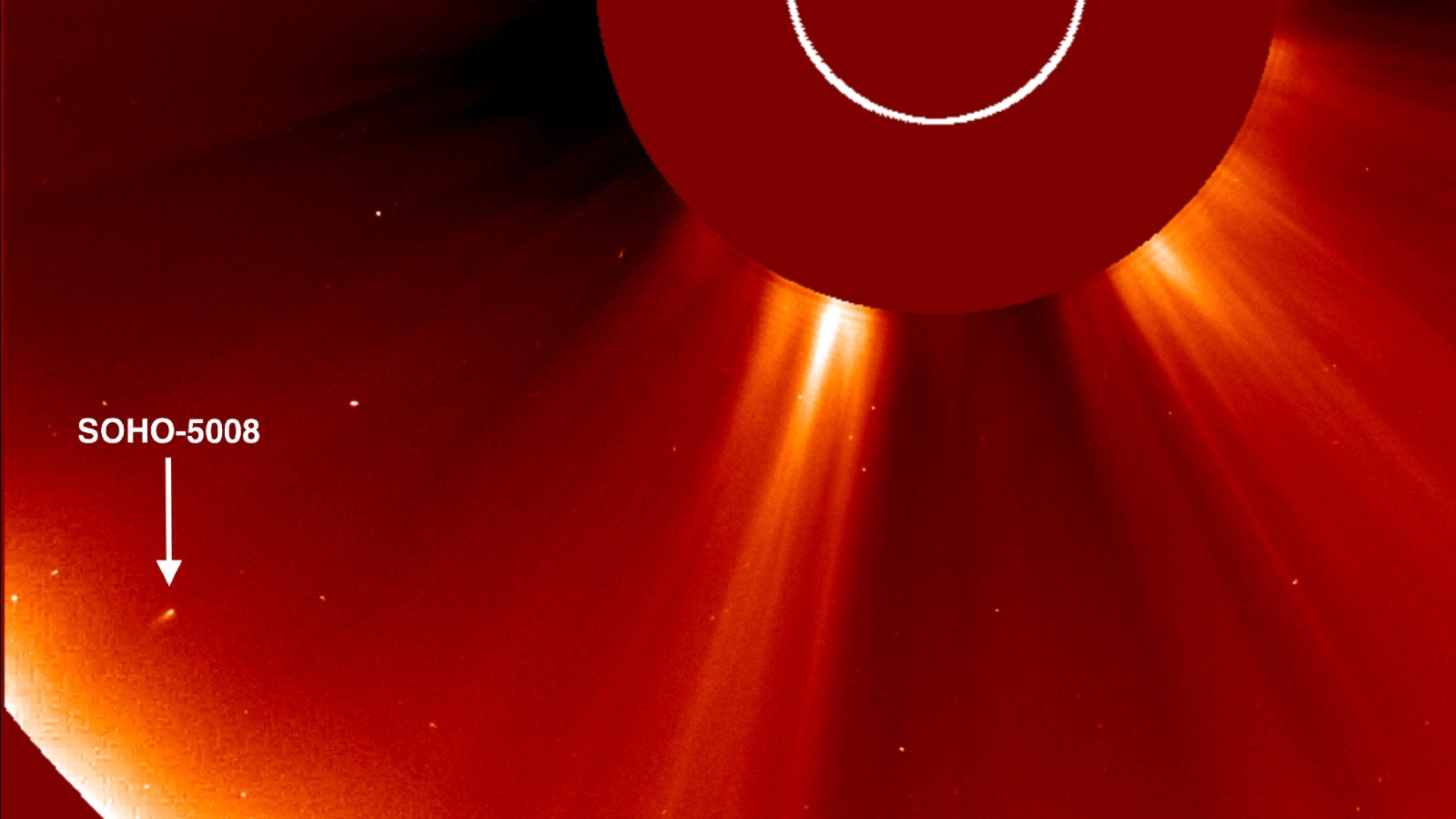Total solar eclipse reveals tiny new comet moments before it was destroyed by the sun
On April 8, just a few hours before the total solar eclipse, an amateur astronomer discovered a small "sungrazer" comet in close proximity to our home star. The newfound object was photographed during totality before disintegrating into nothingness later the same day.

A tiny "sungrazer" comet was discovered, photographed and destroyed during the recent total solar eclipse — all within 24 hours. It is one of just a handful of times a comet has been spotted during an eclipse, experts say.
On Monday (April 8), millions of people across North America watched the moon as it temporarily blocked our home star and its dark shadow raced along the path of totality between Mexico and Canada at more than 1,500 mph (2,400 km/h). The cosmic event, which was also seen from space, was particularly special because of the length of totality — the period when the sun's light was completely obscured — which lasted for up to 4 minutes and 28 seconds.
In the hours leading up to the eclipse, Worachate Boonplod, an amateur astronomer based in Thailand, discovered a small comet near the sun after spotting a faint disruption picked up by the coronagraph on NASA's Solar and Heliospheric Observatory (SOHO), Spaceweather.com reported. The comet was named SOHO-5008.
Karl Battams, an astrophysicist and computational scientist at the U.S. Naval Research Laboratory in Washington D.C. and leader of NASA's Sungrazing Comets Project, later predicted on the social platform X that the "tiny" comet could be visible to photographers during totality — and he was right.
As the moon's shadow passed above New Hampshire, amateur astronomer Lin Zixuan snapped the comet during totality, Spaceweather.com reported.
"Ground-based observations of sungrazing comets are extremely rare" and only possible during eclipses, Battams wrote on X. But the comet was not visible to the naked eye, he added.
Related: When is the next total solar eclipse after 2024 in North America?
Get the world’s most fascinating discoveries delivered straight to your inbox.

Later the same day, astronomers lost track of SOHO-5008 as it likely disintegrated after getting too close to the sun, like most other sungrazers eventually do, Spaceweather.com reported. Due to the limited data collected by researchers before the comet's destruction, it is unclear how large the comet was or how close it got to the sun.
Sungrazers, which are comets that pass within around 5 million miles (8 million kilometers) of the sun, or around 10 times closer to the sun than Mercury, were first discovered in the late 19th century. Most sungrazers belong to the Kreutz group, which are believed to be fragments of a giant comet that exploded around 2,000 years ago, according to Spaceweather.com.
This is not the first time a sungrazer has been photographed during an eclipse. During the Dec. 14 solar eclipse above Argentina and Chile in 2020, comet C/2020 X3 (SOHO-3524), which was also discovered by Boonplod, was photographed sailing toward the sun. Experts believe this sungrazer, which was observed for a longer period, was around 50 feet (15 meters) wide and traveling at 450,000 mph (725,000 km/h), according to NASA.
SOHO-5008 was not the only comet that photographers were hunting for during the eclipse. Cryovolcanic comet 12P/Pons-Brooks, also known as the "devil comet," was also expected to be visible via camera and potentially even to the naked eye. However, this hellish comet proved to be much harder to spot than anticipated, Business Insider reported.
If you missed the recent eclipse, don't worry, it is still possible to rewatch NASA's live stream of the event.

Harry is a U.K.-based senior staff writer at Live Science. He studied marine biology at the University of Exeter before training to become a journalist. He covers a wide range of topics including space exploration, planetary science, space weather, climate change, animal behavior and paleontology. His recent work on the solar maximum won "best space submission" at the 2024 Aerospace Media Awards and was shortlisted in the "top scoop" category at the NCTJ Awards for Excellence in 2023. He also writes Live Science's weekly Earth from space series.
 Live Science Plus
Live Science Plus






